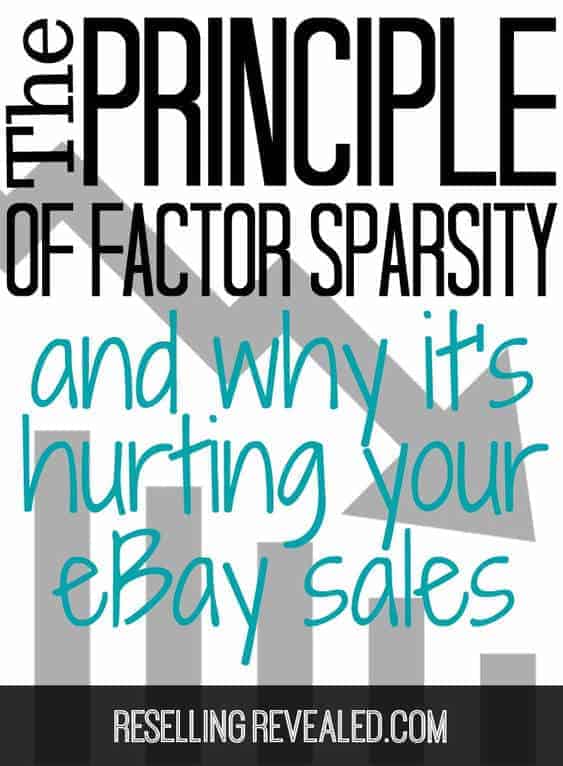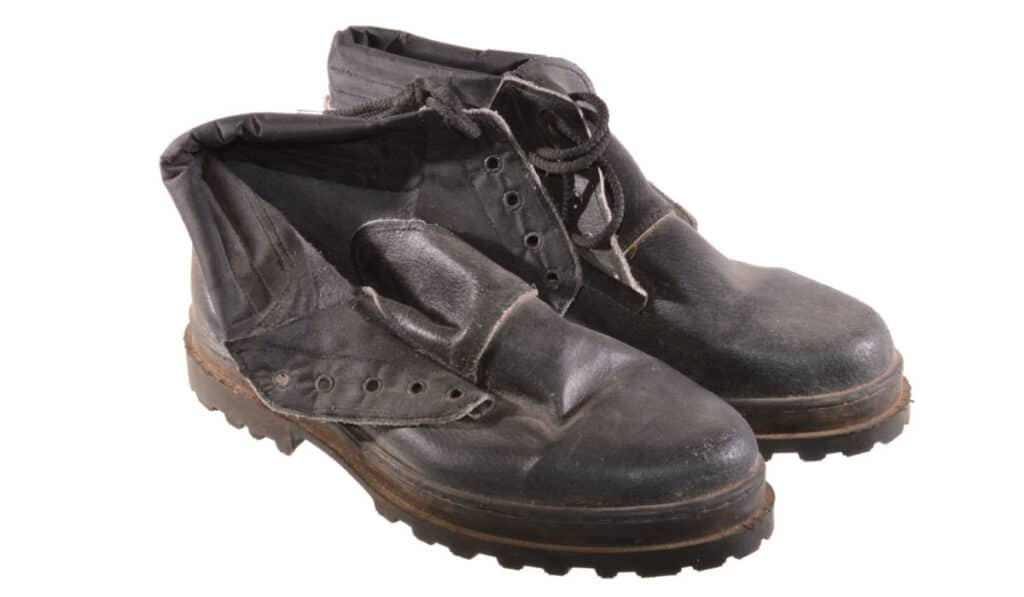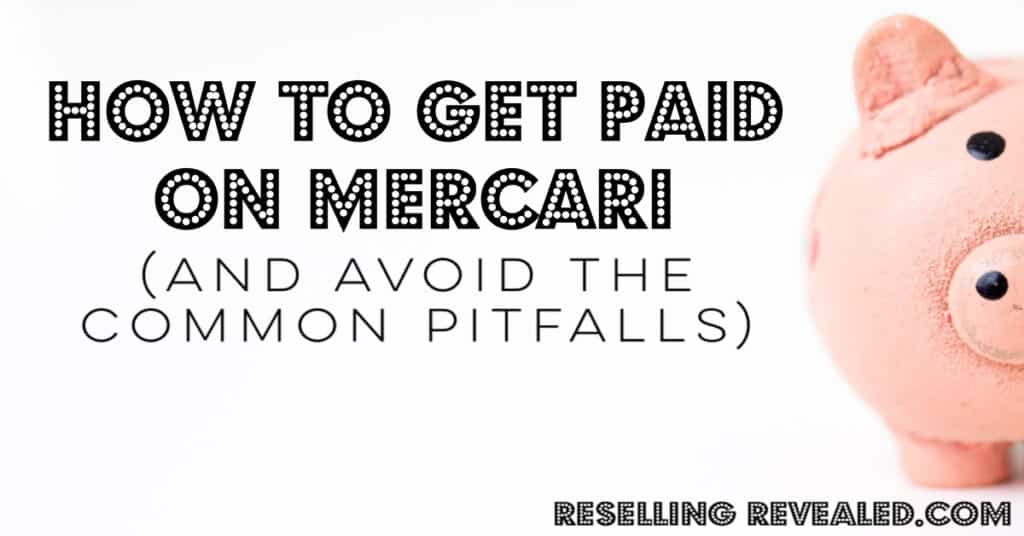As an Amazon Associate I earn from qualifying purchases.
At any given time we have $60-100k of inventory sitting in our eBay store. We can also find as much inventory as we have money for.
The main bottleneck to growing our reselling business is simply how long it takes for things to sell. If all of our items would sell twice as fast we could reinvest our money and grow our business twice as fast!
Which begs the question, how do you make more money in less time on eBay?
Well, it turns out that there is a trick you can apply to your sourcing and listing to sell your eBay items way faster!
If you have been around the business world for any length of time (or read many self help books), you’ve likely heard of the Pareto Principle.
More commonly known as the 80/20 Principle (also, The Law of the Vital Few or the Principle of Factor Sparsity, depending on what circle you run in), the Pareto Principle started as a simple observation by a French Economist named (surprise!) Vilfredo Pareto.
He noted that, in most situations, 80 percent of the effects were a result of only 20% of the causes – or, in other words, you get 80% of the output from only 20% of the input.

Now that you’ve heard of it, you’ll start noticing the Pareto Principle in every facet of your life. For example, in a classroom or meeting, 20% of the people will give 80% of the comments. You can make your house look 80% cleaner by picking up 20% of the mess…etc.
However, the most interesting observation for us comes from applying the Pareto Principle to finances and work, specifically selling faster on eBay. In any given business, 80% of the profits come from only 20% of the products.
This results in several fascinating bits of information that we can apply to make more money in less time.
To illustrate our points, we chose one of our medium-sized eBay accounts that is pretty close to what the average part-time or new full-time eBay seller is doing. Between 800 & 900 active listings (mostly clothes and shoes with a few hard goods mixed in), 200-250 sales per month, around $8,000 in sales, and roughly a 40% profit margin.
We input every single one of our sales for the past 90 days into a spreadsheet (yes, it was as tedious as it sounds…all in the name of providing helpful information!) and found the following:
- When ranked from highest to lowest sale price, our top 10% of sales provided 35.6% of our total sales and almost 50% of our profits.
- 80% of our profits came from 56% of our sales.
- Our bottom 1/3 of inventory (in terms of sale price) provided less than 10% of our profits.
So what do we get from all this? Well, we could stop listing our low-end “bread and butter” items entirely and barely affect our bottom line. In short, instead of spending the time listing, inventory-ing, and shipping these low-end items, we could spend all that time sourcing items that have a better profit margin.
Assuming we listed 140 items per week, we worked roughly 28 hours sourcing and listing the bottom 1/3 of our sold inventory…for a net profit of around $400. Meaning that when we were listing our low-end items we were earning….drumroll….$13.33 per hour. Dang it.
(Before you make a snooty comment, yes, we know our math fails to account for many things (such as sell-through rate, cost of unsold inventory, etc.) Get over it. It’s food for thought)
Focusing On Flipping High Dollar Items
With the start of the new year, I have seen a ton of Instagram posts about how people are going to “focus on high dollar items this year” and “leave their bread and butter death piles behind.”
Well, if this is a possibility for you, why the heck haven’t you been doing it before now?!
We’re not about to get caught up in the “high dollar vs. bread and butter debate” (which you could also call “Quality vs. Quantity”), because our formula is simple. If you want to know how “high” of “high dollar” items should you focus on, we have an answer for you”
Focus on the best profit margins you can afford.
For example, if you can list 100 items per week, you should buy the best 100 items you can. If you have the capital to source high-end, luxury items, do not waste your time at the Goodwill Bins. You might have a better ROI (Return on Investment) with bin items, but if you can only list 100 items a week, $15 average profit per item is never going to make you rich.
Instead, source inventory at Nordstrom rack where the return per item might be $50 or more.
So while we’re in the vein of figuring out what you’re capable of in a week, if you want to be successful on paper and not just in your dreams, you need to crunch some numbers for your business. For example, here is some number crunching that we keep at the forefront of our minds:
- To maintain $500 in sales per day on an account, we need to list at least $800 worth of product per day.
- With an ASP (average sale price) of $35, we shoot for 20-25 quality listings per day on an account to maintain the above number. (Seriously, if you’re one of those people who lists over 30 items per day and you aren’t making very much money, up your sourcing game.)
- As a side note, listing 25 items per day means we can expect to spend up to $1,000 sourcing in an average week. Ouch.
So many newbies are impressed with people having $500 in sales on eBay a day. But eBay is a reliable input/output formula. As long as you have solid systems in place, the more you list, the more you sell. So if you aren’t making as much money as you want on eBay, the problem is not eBay, it is you. (Or your business model)
How ROI Works On eBay
People who love sourcing at the Goodwill Outlets (Bin People…) maintain that ROI is the most important thing when it comes to selling on eBay. Well, if you are just starting off or are on an extremely tight budget, this may be true.
When you first start off, you spend your time to save money.
That is, you have limited funds and an excess of time – so you spend large amounts of time maximizing your ROI. Higher quantity sellers, however, sacrifice some profits in the interest of more free time, more efficiency, and repetition in their business model. Here’s an example:
Seller #1 (Us 2 years ago): This seller goes to a thrift store and finds a great coat. They post about in on Instagram and everyone is impressed. They price the item high and are loath to take any offers on it because they feel it is a one-time find. If you always wish you could have gotten more for something when it sells, you are probably in this camp. This seller will never get rich from reselling.
Seller #2 (Us now): We still thrift but we are much more concerned with moving items than squeezing every dollar we can out of them. Stale inventory? List it all in $.99 auctions and get it gone. This seller is much more concerned with overall profit, and is willing to pay up for items that will return good profits. Because this seller has a bit more capital, they are able to source new items, individual high-end items, etc. Also, they are always on the lookout for multiples of items they can buy. Summary: Still thrifts. Concerned with moving product.
Seller #3 (Us next year): These are the sellers who make the most money on eBay (with the possible exception of luxury consignment shops). They buy things in quantity and are able to create a single listing for multiple items.
For example, they may buy out all the clearance of an item, make a single listing with 10 variations, and let the items sell over the next year or so. Because they generally have the storage space and the capital, these sellers are not concerned with having money tied up in inventory. One of the biggest differences between these buyers and others is that their operation can constantly be scaled-up with the same model.
They can buy larger lots of close-outs, they look for repeat-able opportunities so they can simply restock when they sell out, and they are most concerned with maximizing their efficiency – because their time is incredibly valuable.
In summary: Buys large quantities. Repeat-able. Consistent inventory sources (with less traditional thrifting). Concerned more about the ROI of their time, not their items.
The Value Of Selling Multiples On eBay
We were at a discount clothing store last year and found a bunch of tank tops on final closeout for $2 apiece. We ended up buying almost 300 of them in 3 colors. We priced them at $18 with free shipping and sold 5-10 a week. We were sold out within 8 months and ended up profiting around $3,000.
But what made this really special, is that we simply made a single listing for each color with size variations. So in effect, we made 3 listings. Total time invested: 1 hour to make the listings, and 1 hour to put them all in totes according to size.
If we had made 3 listings with single items we would have sold the single items and then be back out sourcing right away. Instead, we chose a higher initial investment that paid off handsomely over time (to the tune of almost $1,000 an hour).
What Is Your Time Worth As A Reseller?
Here’s the solution on how to make the most of your time. Remember the old adage, “It takes money to make money” or (in our words) “Ya gotta risk it to get the biscuit.”
Every time I look around at people who are wealthy, I imagine how easy it is for them to make money. If we only had a millions dollars, we could buy rental units, build a warehouse, invest in inventory, build a car wash, buy a frozen yogurt stand, etc.
But how do you turn your $100 into a million with the least amount of time invested? Well, here’s the truth.
You are a single person and, unless you are planning to hire soon, you are limited by your single-person abilities. So If you are limited (by time, resources, etc.) as to the number of items you can list, list better items. Before you scoff, let us elucidate:
In high end real-estate, agents make as much selling a single house as we make in a year.
But did they do any more work selling one property than a real estate agent who sells cheaper properties?
Usually, the answer is no!
They just deal with larger quantities of money.
So what if, instead of selling 50 items per week at $20-30 an item and making $15 apiece, you sold 50 items a week at $200-300 at an item and made $50 apiece? A similar amount of work nets you $2,500 as opposed to $750.
A “worse” ROI on your dollar investment, but an infinitely better investment on something that is far more limited and valuable: your time.
What tips and tricks do you employ to be faster and more efficient on eBay and in life?







